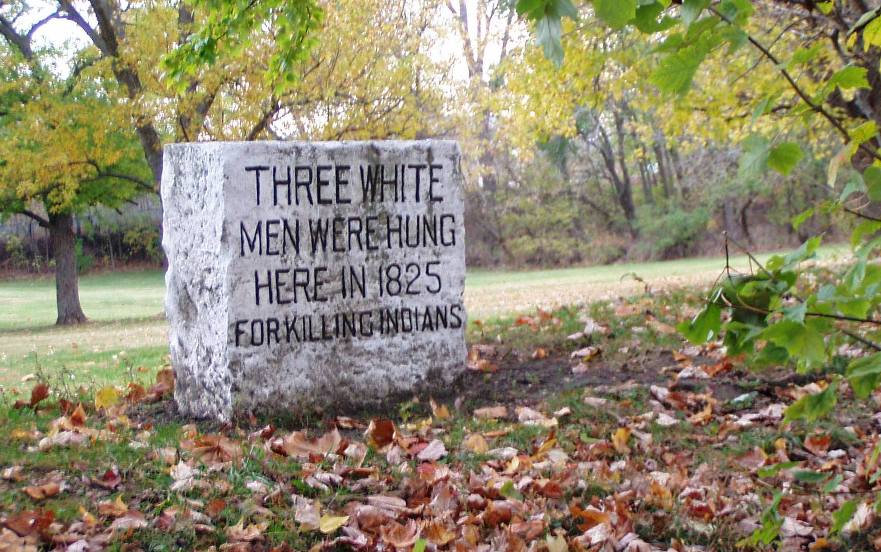On March 22, 1824, a band of nine Seneca and Miami Indians camped on in nearby to hunt. Apparently not satisfied that the band’s intentions were peaceful, and under the pretext of asking the Indians’ help in locating lost livestock, a group of six white men slaughtered the males of the party and returned to their camp to kill the women and children.

Five of the six alleged murderers were captured within three days and held in Pendleton. The sixth escaped and was never apprehended. John Johnston, Indian agent for the region, with the backing of the U.S. War Department and the help of , maintained calm among Indians and whites alike. Johnston hoped for a conviction to maintain the credibility of the United States government among the Indians.
An indictment for murder was brought against the five captured men on April 9, but, due to the illness of the presiding judge, the trials did not begin until the October court term. The proceedings attracted some of the leading attorneys in the central part of the state, including the young , an early white settler from Indianapolis. Within three days, James Hudson was found guilty. Despite an appeal to the Indiana Supreme Court and an escape attempt by Hudson, he was hanged for his crime on January 12, 1825.
During the spring court term, three others, Stephen Sawyer and John Bridge, senior and junior, were tried and convicted. The two older men were hanged, but the younger Bridge was pardoned by Governor , who galloped up on horseback from the capital just as the sentence was about to be carried out.
These trials were a landmark in Indian-white relations in the United States. The trials and punishments established a precedent in cases of white aggression toward Indians and likely represent the first significant acknowledgment of the civil rights of Native Americans. Three books were inspired by the case: , published by Samuel Woodworth in Indianapolis in 1825, and Jessamyn West’s 1975 fictional account, . More recently, Press published , by David Thomas Murphy, in 2010.

Help improve this entry
Contribute information, offer corrections, suggest images.
You can also recommend new entries related to this topic.

